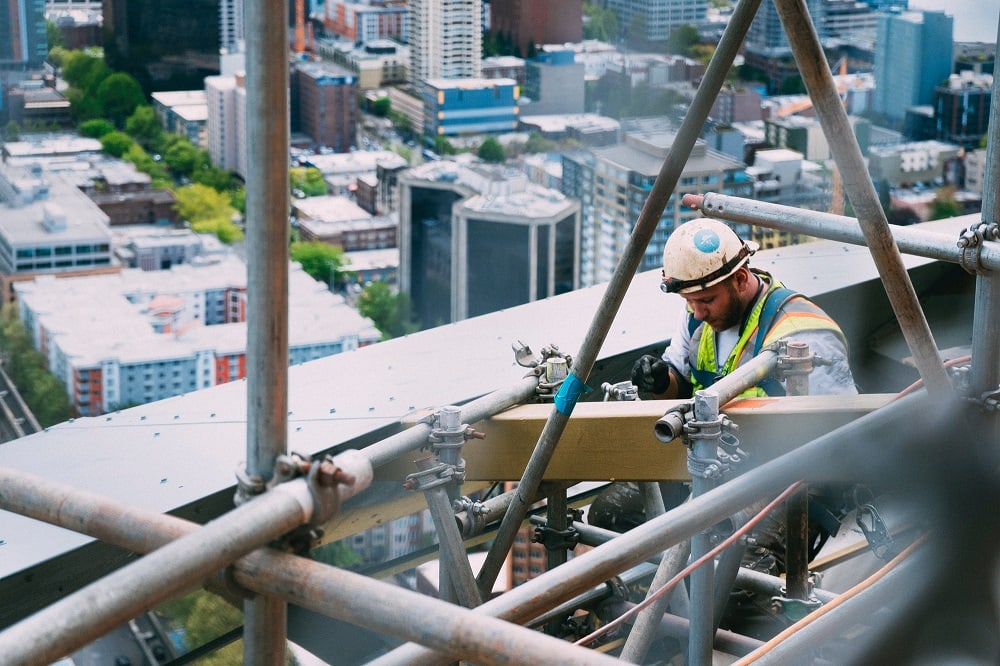Attracting talent in construction: the importance of digital transformation

“We in the industry often talk about increasing productivity, delivering better quality products, and improving the bottom line. But, something that is less discussed but probably even more important, is attracting and retaining talent, and digital transformation is one way to do just that. Especially since the workforce of the future will not only embrace new ways of working, but be expecting to use such services!”
Alan Webb, Global Technology Executive Leader in Construction
As millennials flood the workforce and with Gen Z not far behind, the cohort of digitally native and tech savvy workers is increasing: they will comprise 75% of the workforce by 2020. They place an emphasis on corporate social responsibility, have a great reverence for the environment, place higher worth on acquiring experiences than material things, and are adept at building communities around shared interests. They want to be engaged and they expect to work how they like, with the tools they want to work with, from where they like. Its disruptive. And, its shifting the role of the CIO or Technology Director to a business enabler more than a prescriptive supplier of tech.
For these decision makers there’s a fine line to tread between providing the right tools that ensure quality delivery for employees, whilst still protecting the business. This challenge is exemplified in construction, where finding the cultural driver to adopt new digital technologies is giving technology leaders many a headache. Since construction is hard, manual work, those less digitally savvy may not recognise how new technologies will help them build smarter, meaning education is also a critical part of any transformation project.
To find out how construction companies can break down the barriers to digital adoption for all generations, we spoke with Alan Webb, former IT & Business Change Director for a global construction company to get his advice.
Changing attitudes in construction
“The construction industry has been slow to embrace technology for the good of the longer-term business outlook,” says Alan. “The reason I put it like that is because you will see the technology being deployed on projects is usually selected based on the needs of that individual case. Project managers and teams on site will want the latest piece of software or gadget to help them overcome a challenge or satisfy a client requirement. But, often the selection and utilisation has no real long-term advantage to the business.”
According to Alan, project managers provide such a pivotal role in construction businesses and what they need and request will often take priority.
“The truth is that there is a lot of value to add to the business by embracing new technologies and creating a more unified way of working – across all workflows,” says Alan. “Allowing the most up to date drawings and plans to be accessed from anywhere, at any time, can only be a good thing in helping your teams on-site and in your back office. It speeds up the way people work and helps people solve problems faster. But even more importantly, it is how the new generation of talent expect to be working.”
Influencing and supporting culture with technology
Alan recognises that technology and culture are not mutually exclusive and that one doesn’t simply impact the other. But, by embracing the capabilities of new digital technologies and combining them with an educational approach to highlight what can be achieved through adoption, he feels that the future is exciting for construction.
“I began my career in the construction industry some 13 years ago. The industry has a traditional way of working that involves arriving on site at seven in the morning and this is a necessity to achieve the manual elements on the project,” explains Alan. “What needs to happen, however, is that decision makers need to be educated on the benefits and recognise the importance of technology to attract and retain talent, which can be used to deliver work off site. Helping people achieve a greater balance in their working lives and reducing the number of people on sites is a great way to reduce risk and improve safety on site too. The tech is here and is already enabling some businesses in the industry to achieve some incredible things, so the future looks positive.”
Striking the right balance between technology and security
As with all technology projects and digital transformation, there are important considerations to be made ahead of any new purchases or developments. “You must focus on what the business needs to deliver its products and service, and create a flexible governance framework around that,” says Alan. “You need to keep the business protected while providing options that consider more than the default catalogue of services on offer. If you don’t do this, you will find that your employees will do it themselves and the business will move ahead anyway, creating even bigger challenges for the future as you wrestle with deeper entrenched ways of working.”
For Alan, putting a successful plan in place and providing a loose roadmap of the plan is a logical first step if you haven’t begun your digital transformation journey. “It helps to get senior buy-in by identifying the value-add at each step and gives you something to talk about with existing staff,” says Alan. “Giving the brightest applicants the assurances that they will have the flexibility in the future to work how they want while reassuring the business that it will remain secure is the balance that you need to find. Both of these elements are critical to ensure sustainable growth.”
For more stories of how digital transformation is driving change in the construction industry, head here. Or to find out how Dropbox is helping businesses embrace digital transformation and better manage projects from start to finish, head here.





